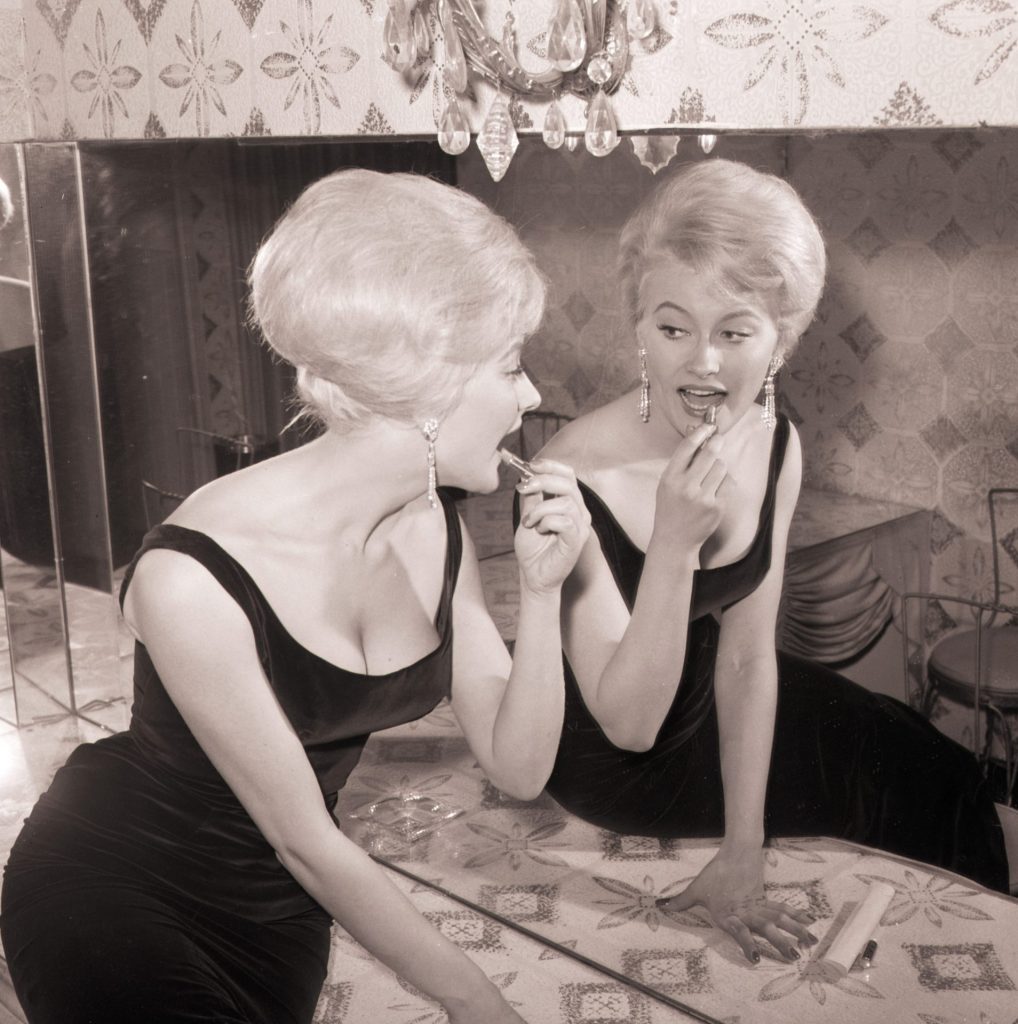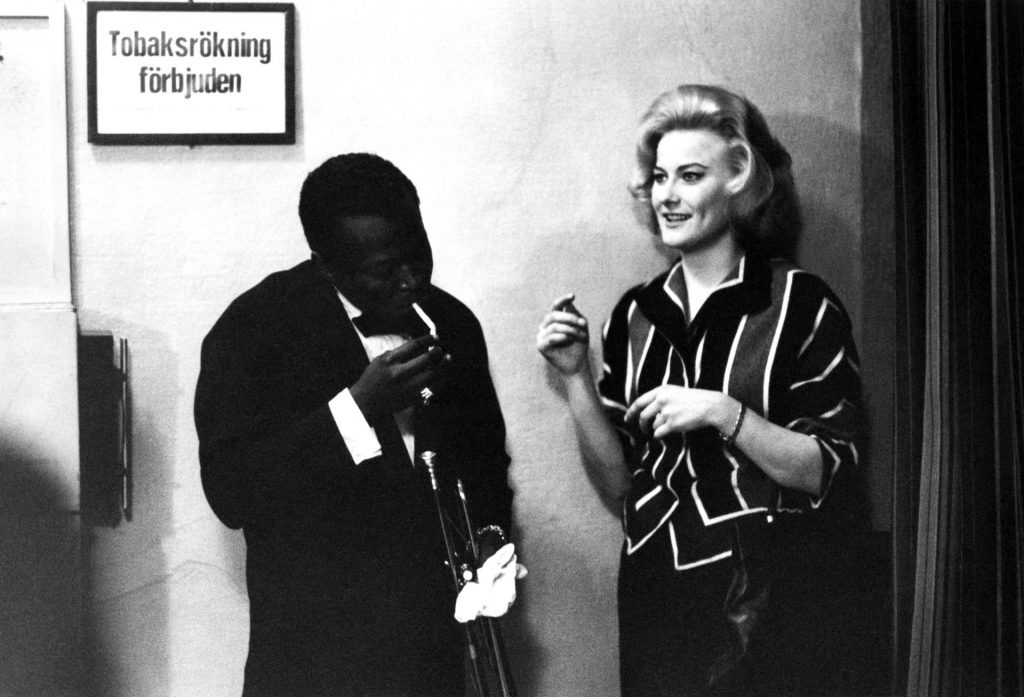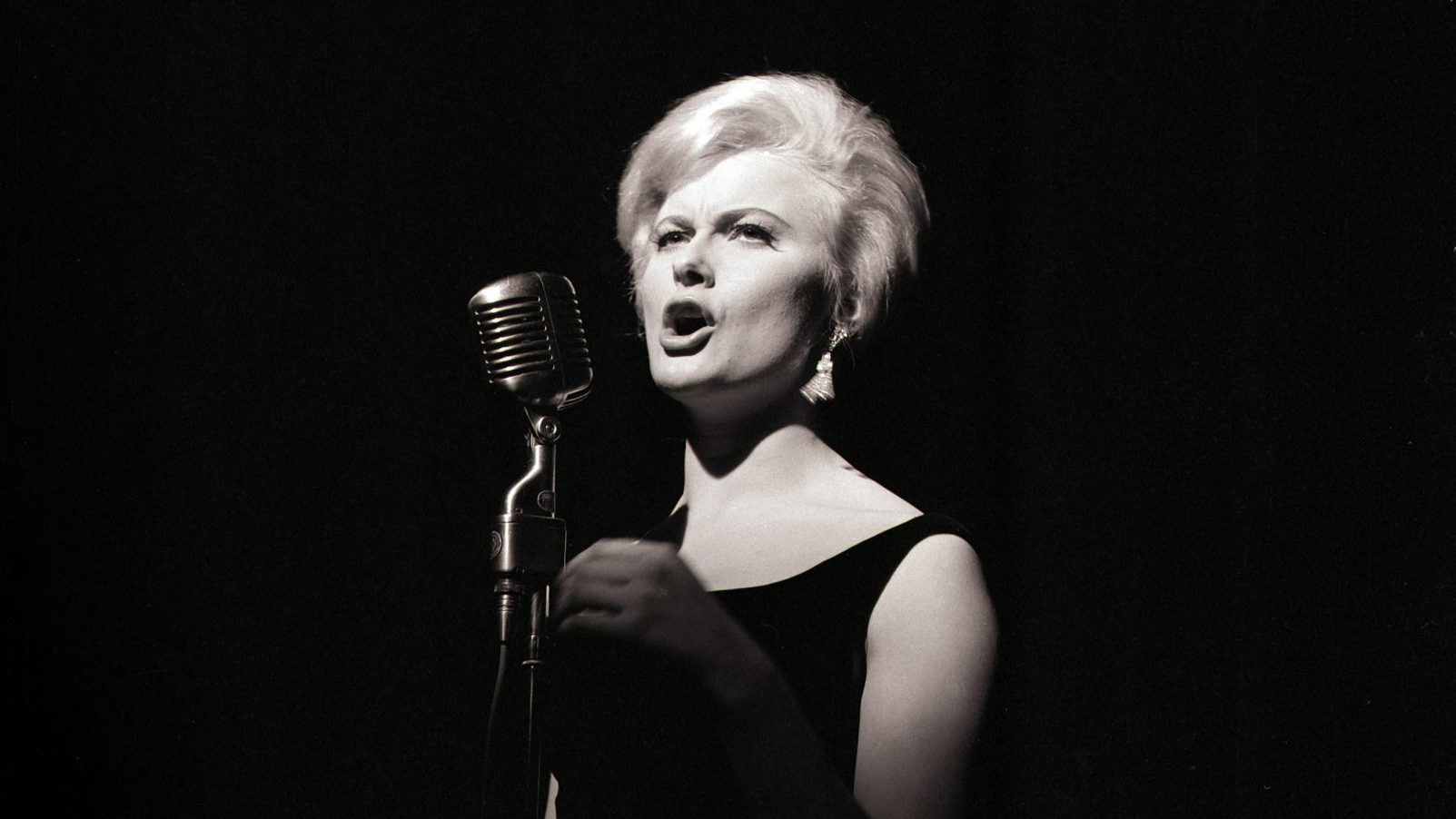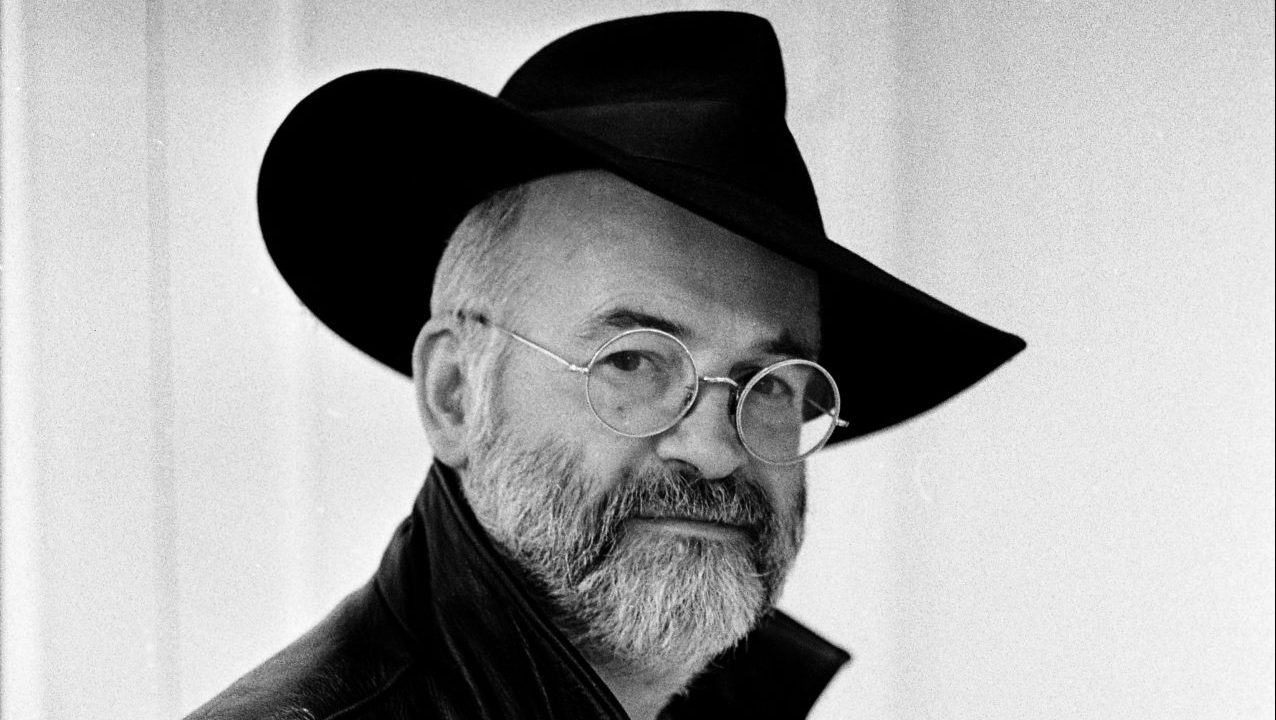Monica Zetterlund left BBC Television Centre on the evening of Saturday, March 23 1963 as the last-place loser in that year’s Eurovision Song Contest. But it was triumph rather than ignominy that lay before her. The following summer, in a single day’s session in a Stockholm studio, she recorded an album with the celebrated American jazz pianist Bill Evans that would go on to be regarded as an all-time classic of European jazz, and would establish her reputation as a music legend.
Sixty years after her Eurovision misfire, and approaching 20 years after her death, Zetterlund still enjoys a strong reputation among a global community of jazz fans. But at home, where she is known simply as Monica Z, she is the girl from a Swedish backwater who made it big and showed that the Swedes could do slick sophistication – she was, according to a poem by all-round Swedish icon Tage Danielsson: “A nightclub queen smelling of barns, a lingonberry twig put in a cocktail glass.”
It was Zetterlund’s greatest talent – her ice-cool jazz voice – that probably lost her the Eurovision contest so spectacularly. The song, En gång i Stockholm (Once Upon a Time in Stockholm), had a glacial pace and charming but hardly thrilling lyrics evoking the winter landscape in the Swedish capital by the poet, lyricist and children’s entertainer Beppe Wolgers. Zetterlund’s accomplished performance was that of the actress she would also become on both stage and screen, but it was easy to see how such subtlety was lost among all the Eurovision glitz.
Zetterlund was introduced on that night as “well-known to British audiences”, and she was indeed hardly just starting out. She had already come a long way from her roots. She was born in Hagfors, a town with a population of just a few thousand people 200 miles from Stockholm and famous for little more than its ironworks. Immobilising treatment for scoliosis compounded her childhood isolation. At 21 she left small-town life behind for the capital and its growing jazz scene. By that time she was already married and had a three-year-old daughter, but she pursued her career doggedly, and success outside Sweden was always the aim.
Zetterlund’s 1958 debut LP brazenly courted the Anglophone market. Titled Swedish Sensation, it showcased an obviously Ella Fitzgerald-influenced voice amid lavish big-band arrangements of English-language standards and bore an impossibly glamorous headshot of a bare-shouldered, blindingly blonde Zetterlund on the cover. Here was obvious star power and, with the album featuring celebrated American musicians, the trumpeter Thad Jones and saxophonist Zoot Sims, the US was soon calling.
In January 1960 the 22-year-old Zetterlund sang on The Steve Allen Show, a programme that was reaching as many as 40 million Americans at its height, appearing on the show the same night as Tony Bennett. A tour of the US followed that year, and she recorded an album in New York with Jones and Sims that was eventually released in 1996 as The Lost Tapes at Bell Sound Studios NYC. A far more intimate, jazz-oriented record than Swedish Sensation, it foreshadowed her career-defining work with Evans.

Despite these attempts to break out into the wider world by singing in English, Zetterlund’s first big hit was Sakta vi gå genom stan (Slowly We Go Through Town, 1961) a cover of Walkin’ My Baby Back Home, refashioned by Wolgers into another of his tributes to Stockholm. It became one of her signature songs and opened her second album, Ahh! Monica! (1962), which was characterised by Wolgers-penned Swedish covers of other familiar Anglophone songs, including Hit the Road Jack and Take Five. It was the start of a unique body of Swedish-language vocal jazz. While 1964’s Make Mine Swedish Style made a return to English and attempted mass appeal, the same year’s Ohh! Monica! was all in Swedish. But 1964 was a watershed year for another reason, as Zetterlund made her legendary Waltz for Debby LP with Evans. That album captured her talent at its very height for all time.
By 1964 Bill Evans was already an icon. He had been part of the Miles Davis sextet from 1958 and played the piano on Kind of Blue, co-composing two of its tracks. Evans had established his own trio with Larry Bunker on drums and Chuck Israels on bass, and these were the musicians who backed Zetterlund on the Waltz for Debby album, a collaboration that came about after Evans heard her earlier recording of his song of the same title. The trio were on tour in Europe and playing a residency at Stockholm’s celebrated Gyllene Cirkeln club when, one August Sunday, they stepped into Europafilm Studios with Zetterlund and created pure magic.
The highlights of Waltz for Debby are multiple. Once Upon a Summertime, the English version of Michel Legrand and Eddie Barclay’s La valse des lilas, is almost unbearably wistful. Zetterlund paints a picture of past romantic bliss and then concludes: “Now another wintertime has come and gone/ The pigeons feeding in the square have flown/ But I remember when the vespers chime/ You loved me once upon a summertime”. Her performance gives the song a sense of regret that is palpably, and devastatingly, convincing.
There is a great range of moods on the record. The frenetic So Long Big Time demonstrates Zetterlund’s ability to dish out some technically complex phrasing, but the very next track, Monica’s vals, is breezy and almost nursery rhyme-like in its melodic simplicity. There are English-language standards like Come Rain or Come Shine, Lucky to Be Me, and It Could Happen to You, delivered in an instantly familiar popular vocal jazz style – but the three Swedish-language songs take a very different turn. These are among Zetterlund’s very greatest recordings.
Jag Vet En Dejlig Rosa (A Beautiful Rose) is an old Swedish folk song where Zetterlund finds a downbeat, dark tone in stark contrast to the album’s smooth, upbeat standards. But even more haunting is the traditional Vindarna Sucka Uti Skogarna (The Winds Sigh in the Forests). Zetterlund sings over a sparse accompaniment, and her mournfulness, combined with the fathoms-deep tones of Israels’ bowed double bass, creates an ethereally sinister atmosphere. The closing track Om Natten (At Night), written by one-of-a-kind Swedish songwriter Olle Adolphson, is full of unresolved apprehension. Less a song than a poem set to music, it makes a poignantly melancholic end to an album on which Zetterlund showed her enormous emotional dexterity.
In the wake of Waltz for Debby, Zetterlund experimented with a range of sounds. 1967’s Monica included a Swedish cover of Eleanor Rigby with a comically odd brass arrangement, and a rather more successful version of Burt Bacharach’s Alfie. 1969 single Gröna små applen, a cover of the American hit Little Green Apples of the previous year with lyrics by ABBA manager and lyricist Stikkan Anderson, would become one of Zetterlund’s best-loved songs, even if it was the kind of mainstream material that was really a waste of her enormous talent.
1971’s Monica-Monica was a bizarre selection of Swedish covers of English-language hits. There was the 5th Dimension’s One Less Bell to Answer, Diana Ross’s Doobedood’ndoobe, Neil Diamond’s Soolaimon, and George Harrison’s My Sweet Lord, but topping it all for incongruousness was Zäpovalsen, a cover of Toads of the Short Forest, taken from The Mothers of Invention’s Weasels Ripped My Flesh LP.

Zetterlund began to find her feet again with 1972’s Chicken Feathers, written by her then partner, the American jazz pianist Steve Kuhn. Accompanied by the Swedish Radio jazz band, Zetterlund delivers these quirky, soulful jazz songs with absolute mastery. Over the following decades there were further highlights, including a reunion with Thad Jones on 1978’s It Only Happens Every Time, a whole album of Billie Holiday covers in 1983 and an LP of Olle Adolphson songs the following year.
But in 1991 it would again be an overtly commercial record that brought success. Under vinrankan (Under the Vine) was a bit of post-Enya world music and hardly Zetterlund’s greatest vocal performance, but it was a huge success, and the LP it was taken from, Varsamt (Careful) charted higher in Sweden than any other she had yet released, reaching No 10.
In May 2005, Zetterlund died in a fire in her Stockholm apartment, aged 67, and Varsamt’s sales were surpassed by Z, the greatest hits album that rose to No 7 that Christmas. The manner of her death – her scoliosis had rendered her unable to escape the fire – adds pathos to the experience of listening to her today. Her final release before her death was a tribute to Evans, who had died in 1980 aged 51, the result of years of drug use. It was a fitting return to her greatest triumph.
Today, the Monica Zetterlund Society keeps her memory alive with memorial concerts and a scholarship programme. Monica Zetterlund Park in Stockholm was so named after her death and contains a bench that plays her music, and a small museum dedicated to her is now Hagfors’ main attraction. In 2013, the Swedish singer-songwriter Edda Magnason starred as Zetterlund in a well-received biopic, Monica Z.
Zetterlund’s enduring appeal is clear. She was one of those artists who endeared herself to the listener on a profound level because, while she took on the carapace of an indomitable diva, a sense of vulnerability was always below the surface – the obvious British analogy is with Dusty Springfield.
This was a quality not lost on Tage Danielsson, his poem honouring Zetterlund noting “Men märk det vemodsdraget över munnen/ ett nordiskt sångardrag” (“But notice the melancholy drawl over the mouth/ a Nordic singer’s drawl”). While pioneering a specifically Swedish vocal jazz, Zetterlund also set a new bar for emotional expression in music in any language.




